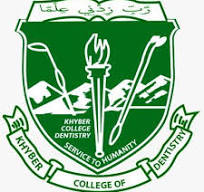FREQUENCY OF INADEQUATE DIMENSIONS OF OCCLUSAL REST SEAT PREPARED ON 2ND MOLAR ABUTMENTS FOR CAST REMOVABLE PARTIAL DENTURES
DOI:
https://doi.org/10.33279/jkcd.v10i01.292Keywords:
Removable partial denture, Occlusal rest seat, Dental education.Abstract
Objective: To evaluate occlusal rest seat preparations for cobalt chromium cast removable partial denture.
Materials and Methods: A cross-sectional study was carried out in the department of Prosthodontics, Khyber College of Dentistry, Peshawar starting from June 2014 to June 2015 using consecutive non-probability sampling technique. Data was collected from 127 partially dentate patients having a bounded saddle with a distal abutment as second molar with normal occlusal surface morphology and mesio-occlusal rest seats prepared on the mentioned molar teeth. Patients having partially dentate areas with no principal abutment as second molar and rest seat other than mesio-occlusal rest seat were excluded from the study. Casts were evaluated for aspects of rest seat like the general outline form of the rest seat (visually assessed from the casts), the bucco-lingual and mesio-distal dimensions were measured using a divider and scale. Depth of the rest seat was measured by placing a piece of warm modelling wax with the casts in occlusion and measuring the thickness using Iwenson gauge. Data was analyzed using SPSS 20.
Results: Out of 127 patients, mean age recorded was 38 years with Standard deviation ± 2.15. Males (62%, n=79) reported more than females (38%, n=48). The most frequently reported inadequate dimension was the depth of rest seat (46%, n=58), followed by the general outline form and mesio-distal width (40%, n= 51). The bucco-lingual dimension was recorded to be inadequate in 37% (n=47) of the cases.
Conclusion: Most of The participants tend to under-prepare rest seat in terms of outline form, width, length and depth.
Downloads
Published
How to Cite
Issue
Section
License
Copyright (c) 2020 Sajid Ali, Fazal Ghani, Faiza Abdul Hakam, Asif Ullah Khan, Asif Qureshi, Muhammad Saleem

This work is licensed under a Creative Commons Attribution-NonCommercial-NoDerivatives 4.0 International License.
You are free to:
- Share — copy and redistribute the material in any medium or format
- Adapt — remix, transform, and build upon the material
- The licensor cannot revoke these freedoms as long as you follow the license terms.
Under the following terms:
- Attribution — You must give appropriate credit , provide a link to the license, and indicate if changes were made . You may do so in any reasonable manner, but not in any way that suggests the licensor endorses you or your use.
- NonCommercial — You may not use the material for commercial purposes .
- No additional restrictions — You may not apply legal terms or technological measures that legally restrict others from doing anything the license permits.









